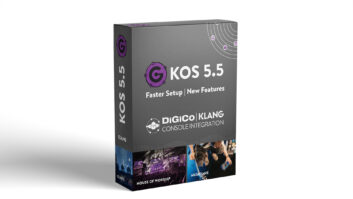New York — The traditionally staid and margin-rich major appliance category is anything but of late, and the roots of its current malaise can be found in last year’s retail sales performance.
According to TWICE’s 2001 Major Appliance Retail Registry, the nation’s top 100 white goods dealers posted a cumulative $12.28 billion in majap sales last year, representing a startlingly slim 1.5 percent gain over 1999’s revised total of $12.1 billion.
The flattened revenue results are striking in their suddenness and severity when compared to the record back-to-back gains garnered during the waning years of the go-go Nineties, when double-digit growth was the norm. Indeed, TWICE Registries reflecting majap sales in 1998 and 1999 showed respective hikes of 12.8 percent and 12.7 percent, while last year’s paltry increase hearkens back to the earlier part of the decade, when massive consolidation swept the retail landscape.
That, in large measure, explains why Registry revenue growth hit a brick wall once again in 2000. The surprise departure of former No. 2 appliance player Circuit City from the category, and the death-throe performances of fifth-ranked Montgomery Ward and former Top 20 stars Heilig-Meyers and Roberds, were enough to skew the tally totals, given the extraordinary concentration of volume among top tier retailers.
But bankruptcies and drastically altered business plans don’t tell the whole story behind last year’s rocky results. Also proving a drag on Registry revenue was Sears’ anemic 2.6 percent sales growth. While the chain’s $125 million gain placed it squarely in the plus column, even a mild hiccup at Hoffman Estates can cause the industry to shudder, given the No. 1 appliance retailer’s staggering 41 percent share of Top 100 volume.
Far less impactive, but equally telling, was the 28 percent drop in white goods volume for 47th-place Filco (which also shut two of seven stores), and the 31 percent shortfall for 68th-ranked Apex, a Rhode Island retailer that’s liquidating its assets. More dramatic still was the 50 percent plummet by regional chain Big Sandy Superstores, which halved its store count to nine units and dropped from 29th to 58th place on the charts.
Yet the downdraft by bellwether dealers belied some stellar turns by a handful of standouts, making it difficult to cast blame on the category alone. Bucking the soft sales trend was Best Buy, which by dint of its format was a direct beneficiary of Circuit City’s controversial decision to walk away from white goods. The new No. 3 appliance chain grew that business a whopping 25 percent to nearly $1.2 billion, albeit aided by the addition of 54 new big box stores.
Big gains were also enjoyed by California’s McPhails (No. 18), which forged ahead 34 percent through novel marketing and the addition of two stores; Karl’s Sales (No. 29), whose ultra high-end assortment sent sales soaring 26 percent; and Rosa’s Home Stores (No. 36), which still rules the roost in northwest New York, growing its majap business 25 percent.
Also enjoying revved up appliance revenue was the NATM buying group, whose members continued to dominate the Top 100. Burning up the charts was ninth-place BrandsMart U.S.A. up 20 percent; 19th-ranked R.C. Willey, up some 27 percent; No. 20 dealer Nebraska Furniture Mart, which gained 18 percent; 21st-place American TV & Appliance, up 21 percent; and 43rd-ranked Abt, which grew 20 percent.
Other members who skirted the majap miasma that bled so many of their competitors include eighth-ranked H.H. Gregg, up 11.2 percent; 11th-ranked Conn’s, up 9 percent; 13th-ranked ABC Warehouse, up 9.5 percent; 22nd-place Bernie’s, ahead 7.5 percent; and 33rd-place Cowboy Maloney, up 11.5 percent.
The group’s sole exception: the recently defunct American Appliance (No. 12), which grew majap sales — if not earnings — 3.5 percent in 2000, its last full year of operation.
The cause for much of retail’s appliance angst lies atop the Top 100 charts, where the behemoths of the white goods trade are slugging it out in a costly price war over market share. In particular, the bloody battle between home improvement titans Lowe’s and The Home Depot for domestic dominance has fomented extremes of compressed pricing, with independent dealers getting caught in the crossfire. Indeed, the heat generated by their contest was one of the key reasons cited by Circuit City for getting out of the kitchen.
Lowe’s, which remains staunchly committed to surpassing Sears in appliance sales in five years, has steadily climbed the Top 100 ranks as it expanded its majap assortment and store count, and now stands as the No. 2 retailer in white goods. Home Depot, which embarked on its aggressive move into majaps in 1999, and limits its kitchen and laundry offerings to the GE and Maytag brands, is still playing catch up, but nevertheless cracked the Top 10 on the strength of its ubiquitous 1,134 super centers. Similarly, its upscale design center offshoot, Home Depot Expo, grew its appliance business by 63 percent as it added nine stores and leaped to 35th from 50th.
Also adding to the pressured pricing environment is Sam’s Club, the warehouse club wing of Wal-Mart, which itself is testing GE appliance departments in some two dozen stores. Sam’s Club now occupies the No. 7 perch on the Appliance Registry with $173 million in white goods sales.
Holding their own against the onslaught are sixth-ranked P.C. Richard, an entrenched New York independent that appears uniquely suited to service the hi-rise challenges of its dense urban market, and NATM’s Gregg and BrandsMart, which are adding more storefronts within their respective territories.
All told, the Top 10 players accounted for a staggering 82 percent of total Registry volume, or $10 billion, while the next 15 largest dealers represented only 10 percent of the tally. Tellingly, the combined share of the remaining 75 merchants is even less than that. Their 9 percent take amounted to $1 billion last year, which eroded from the 10 percent share they held in 1999, further underscoring the overwhelming concentration of sales might among a handful of national and regional chains.
How The Pie Splits (By Ranking Group, In $ MIllions)
2000 Registry Total: $12.281 Billion













